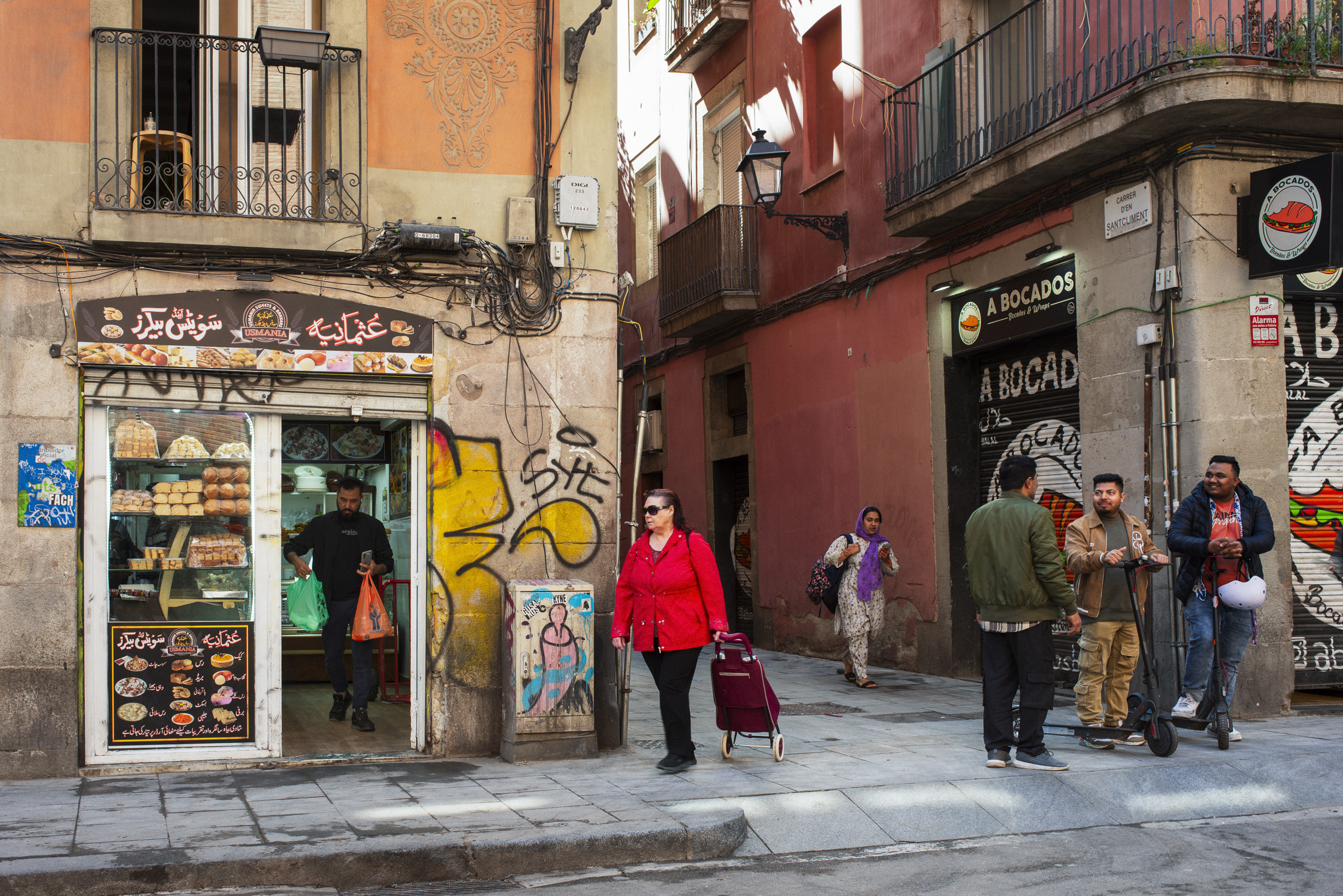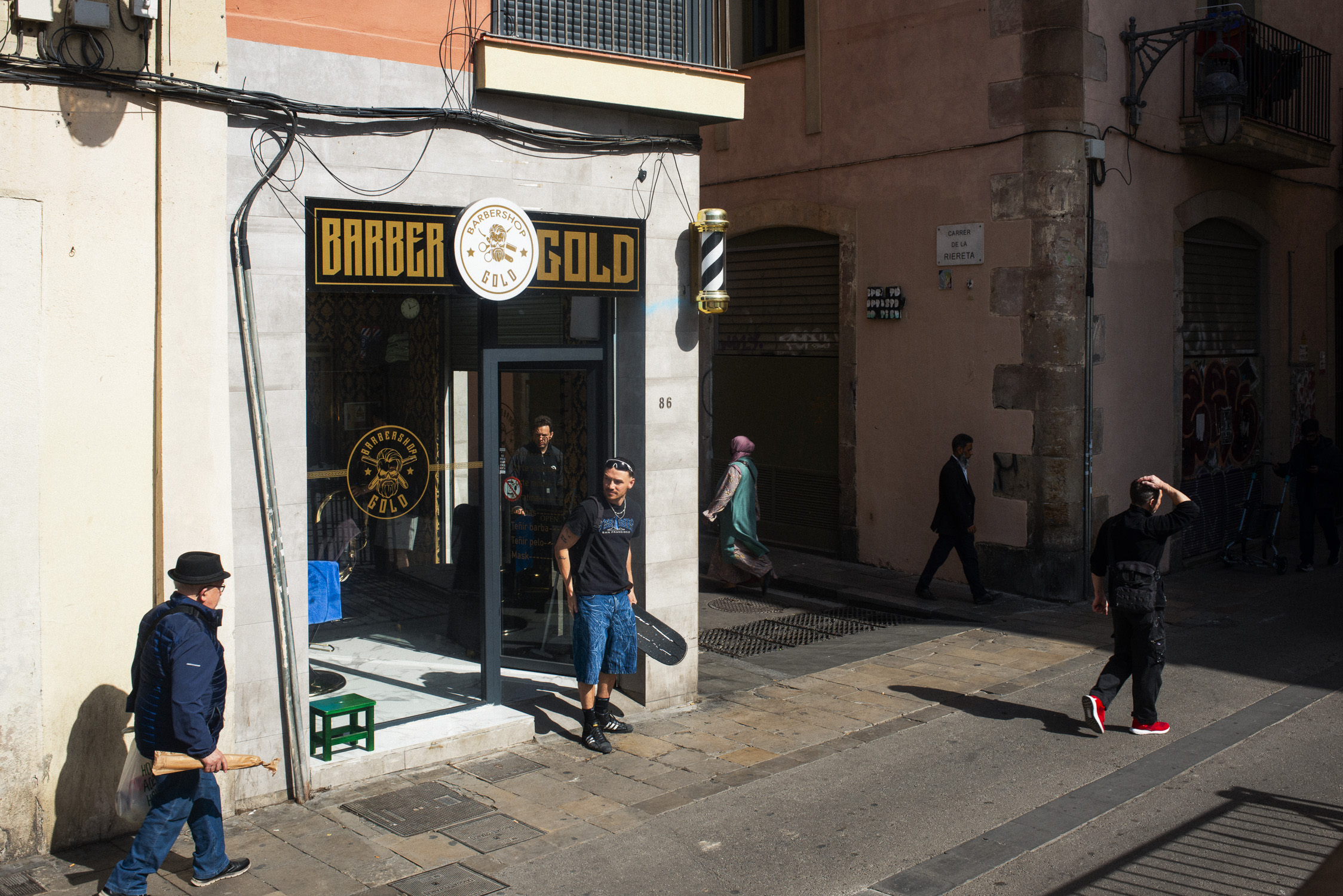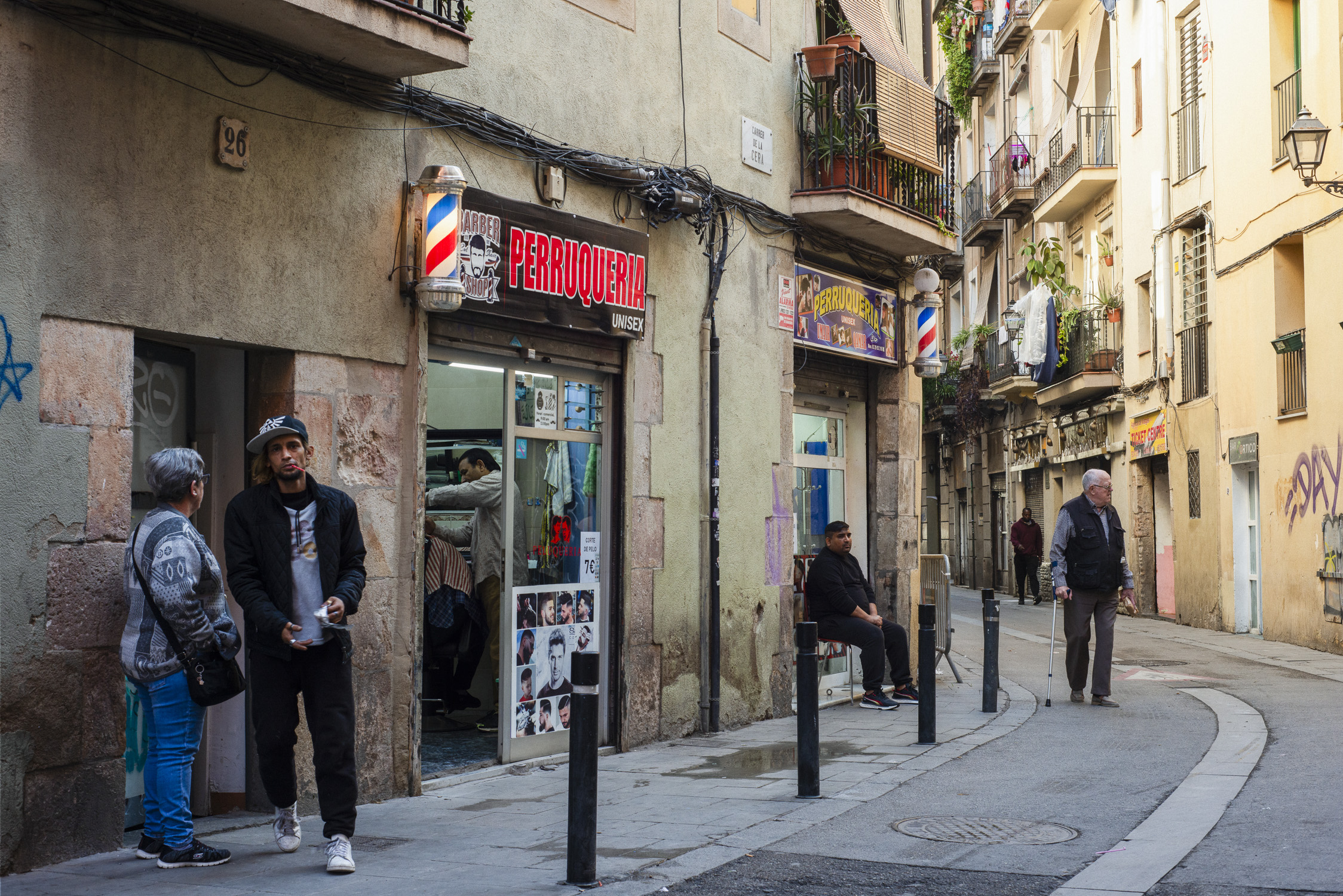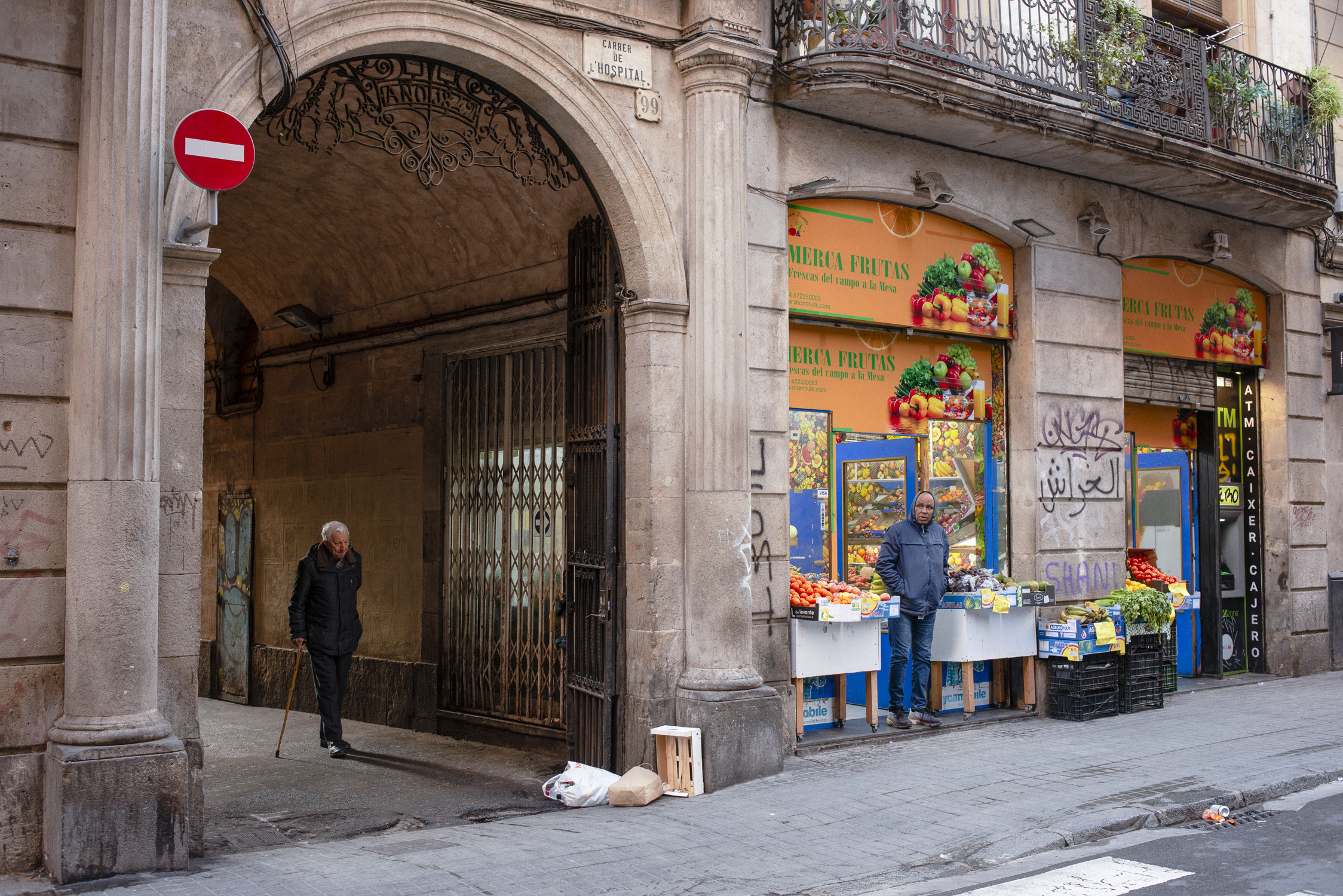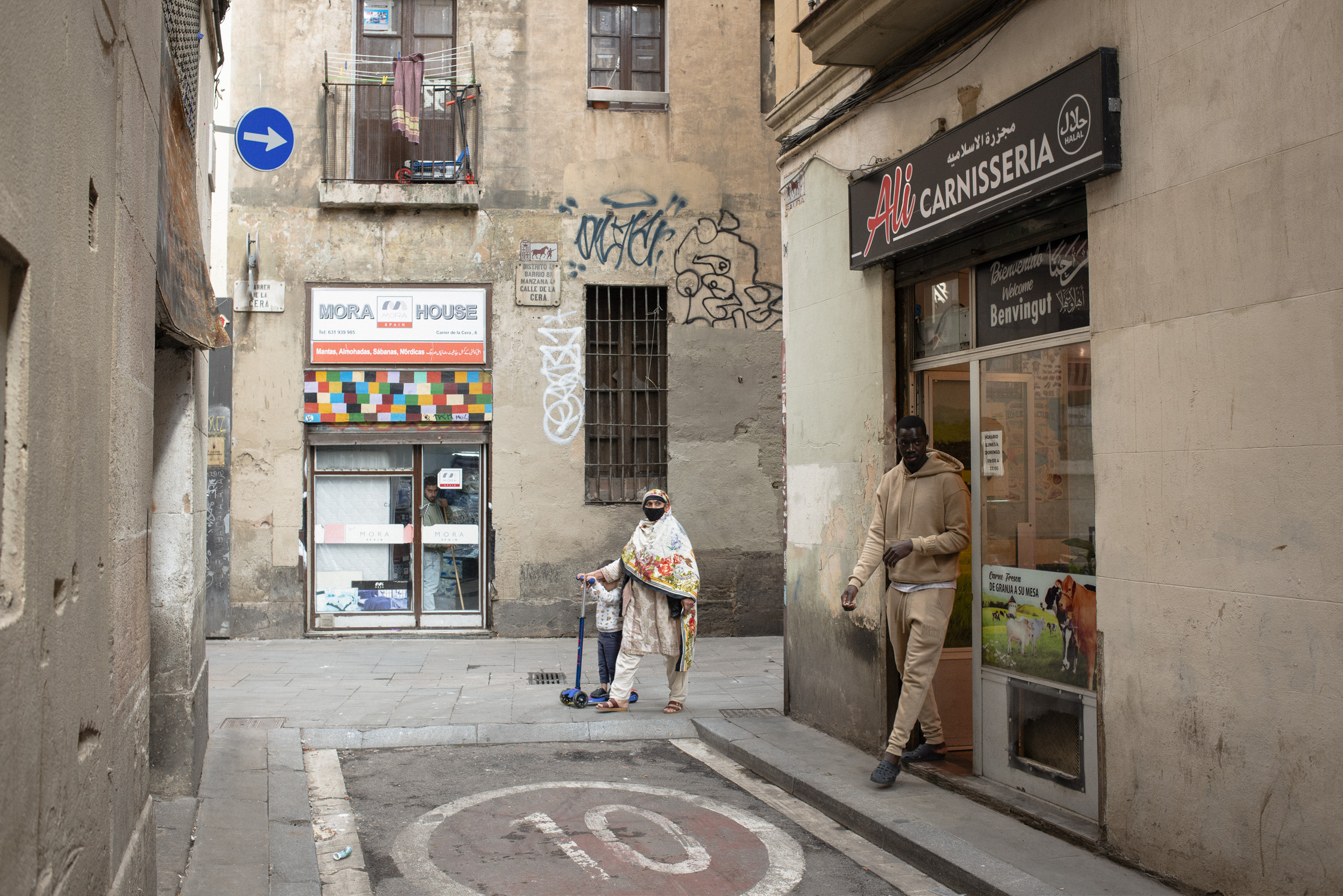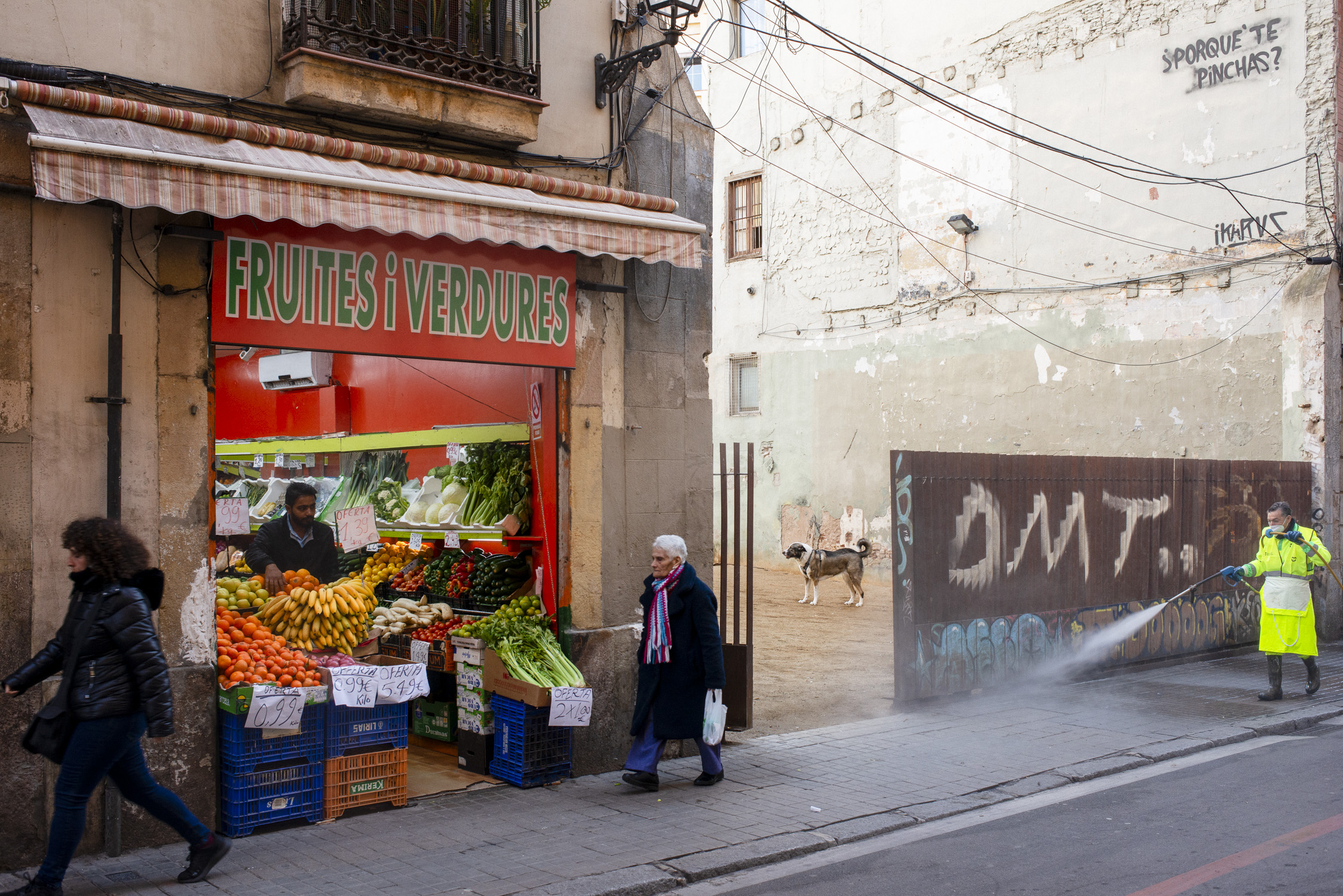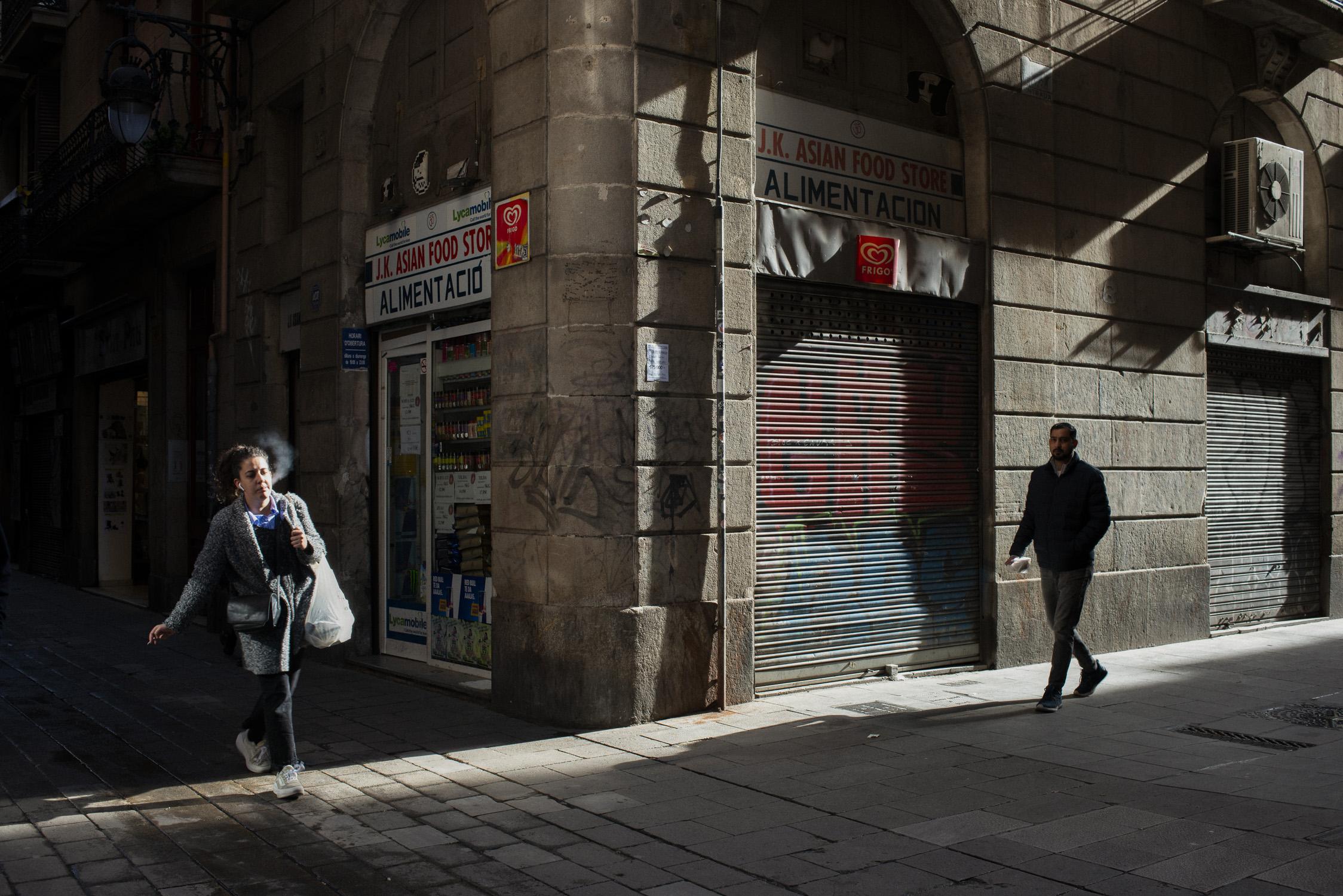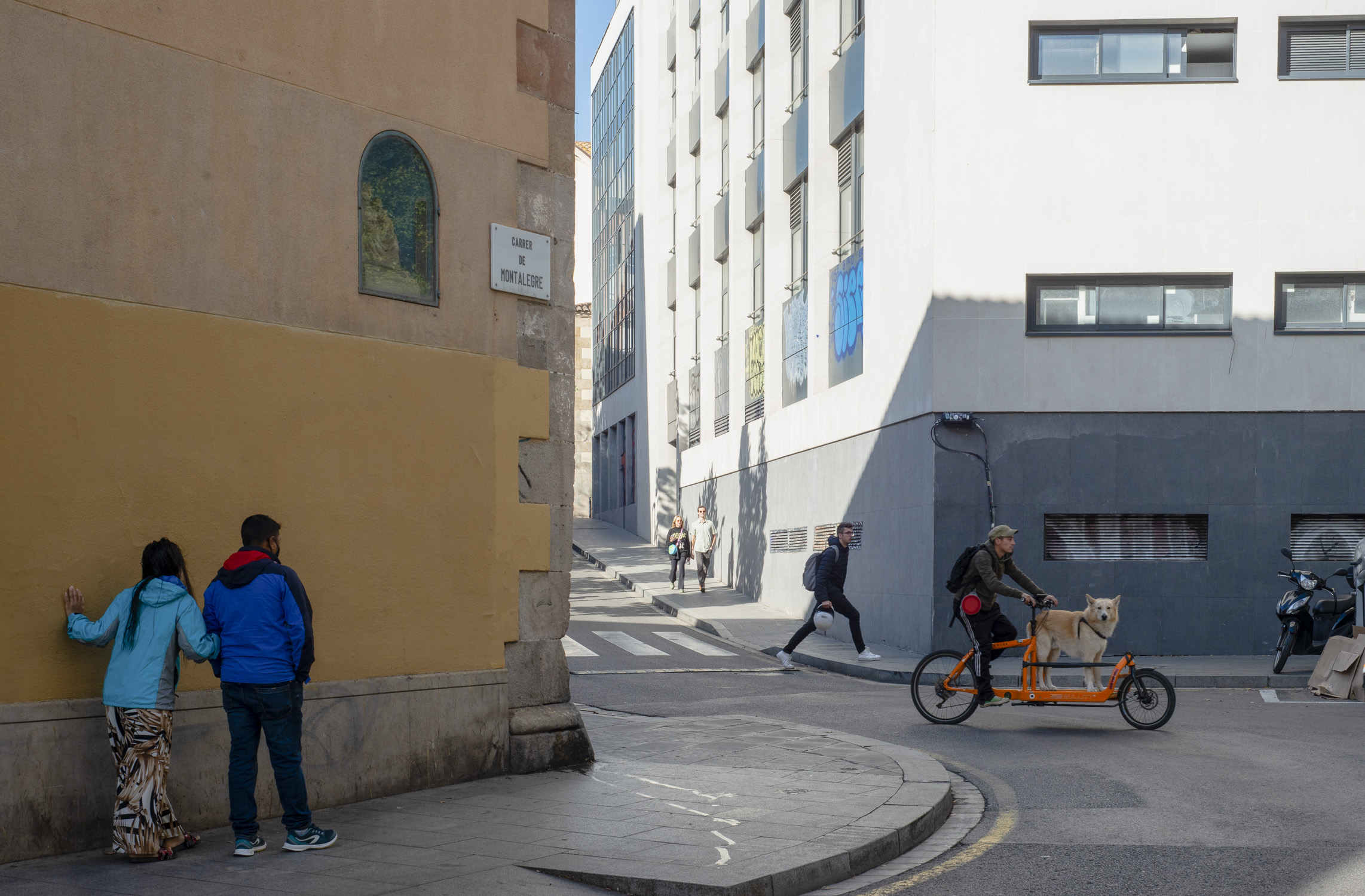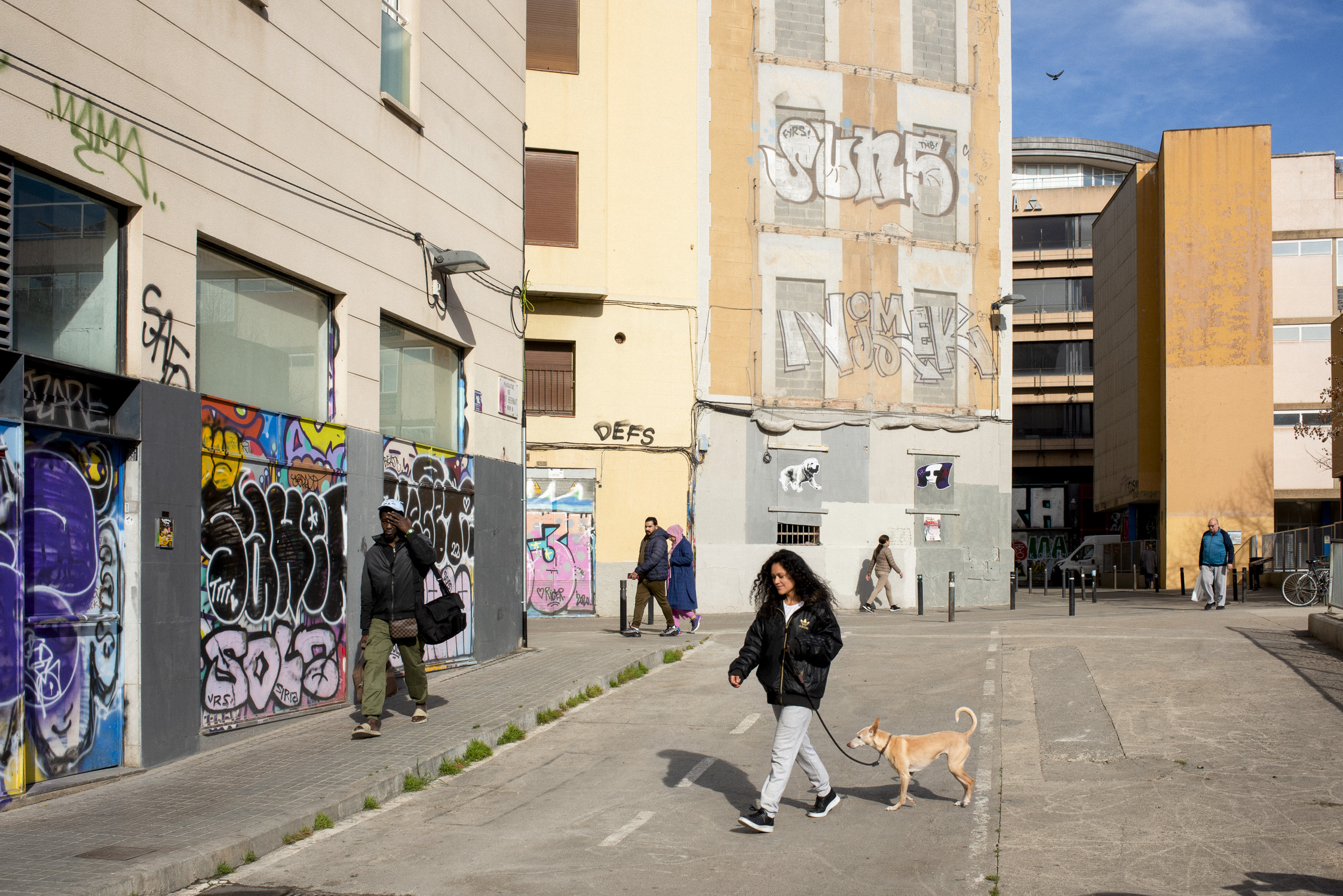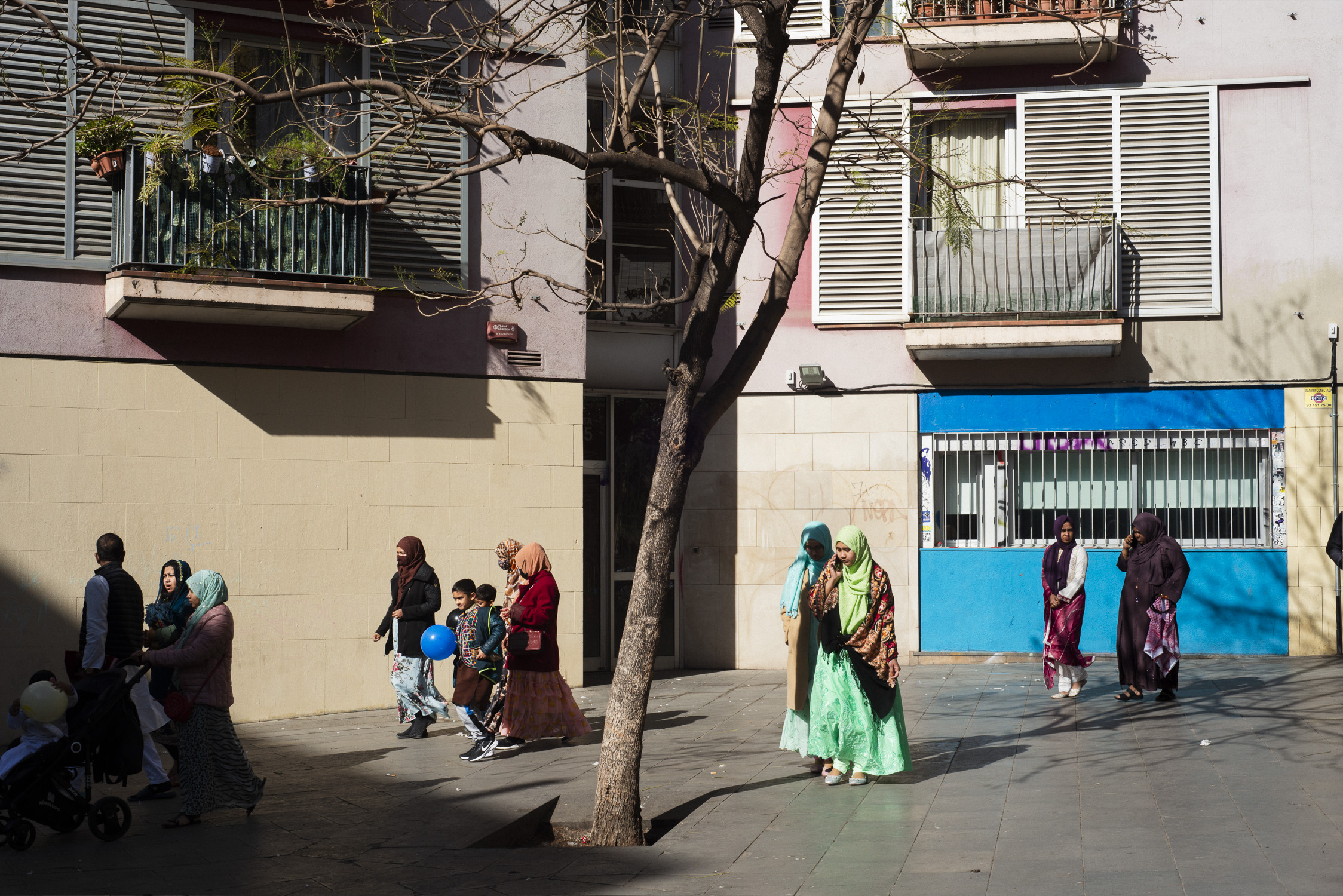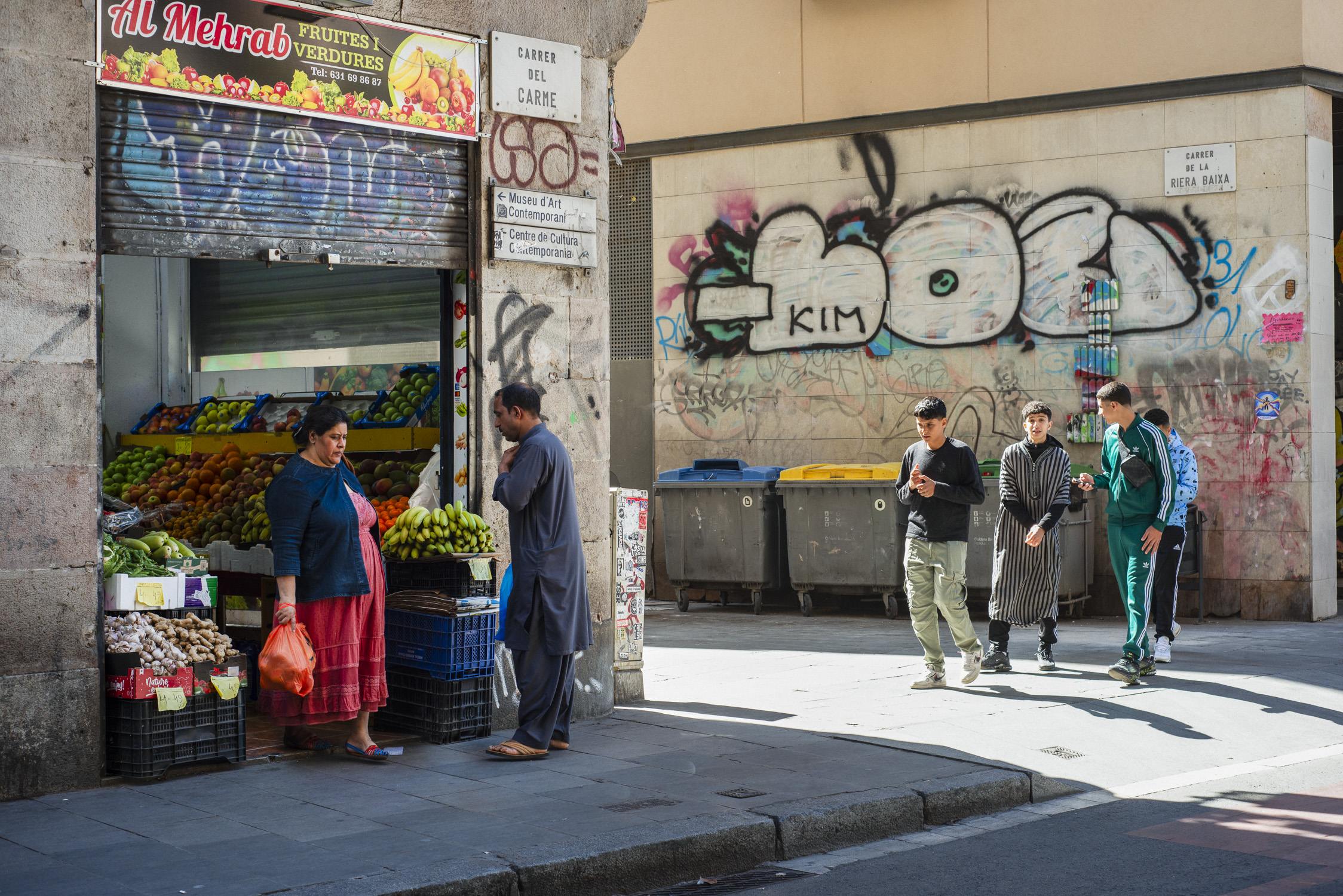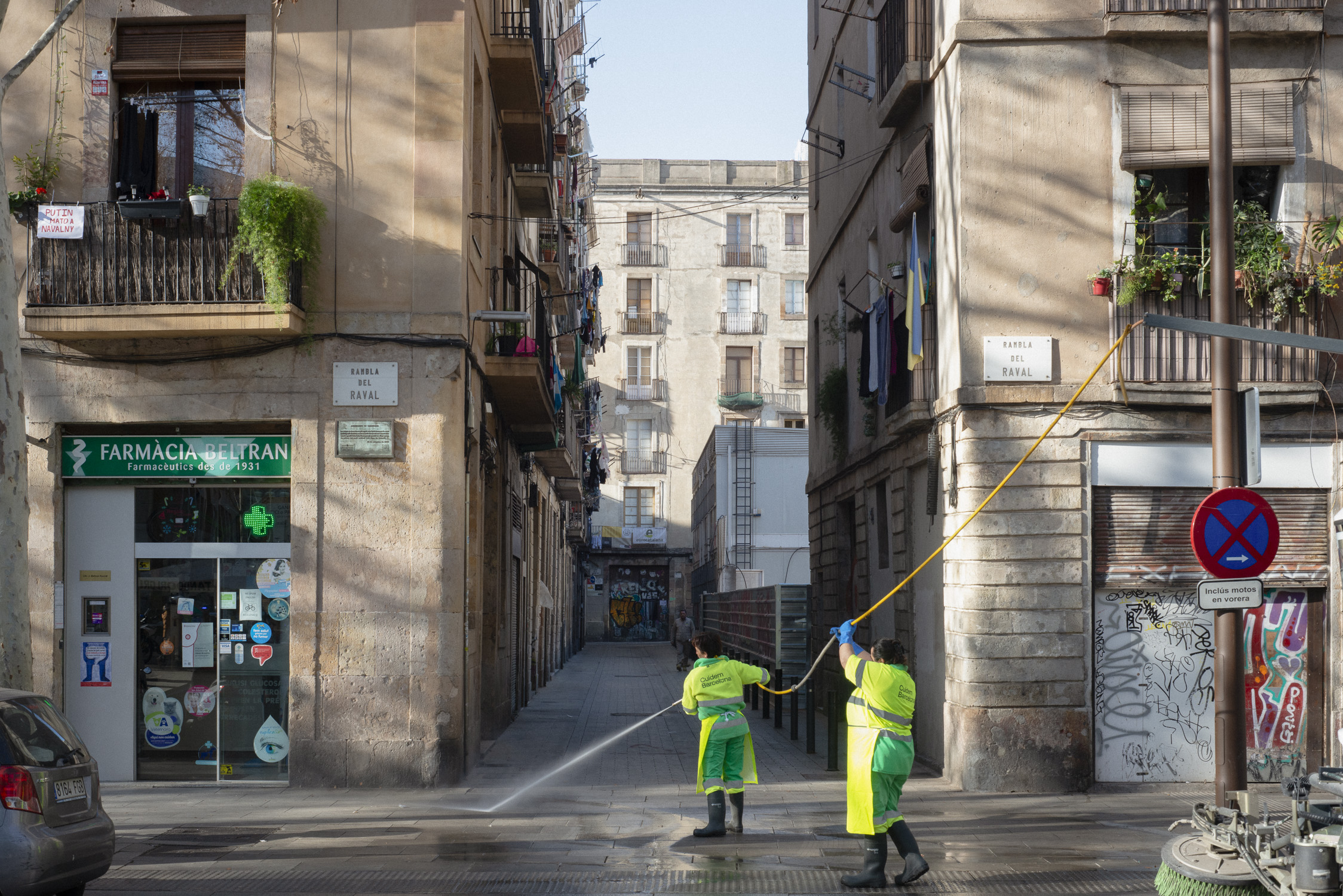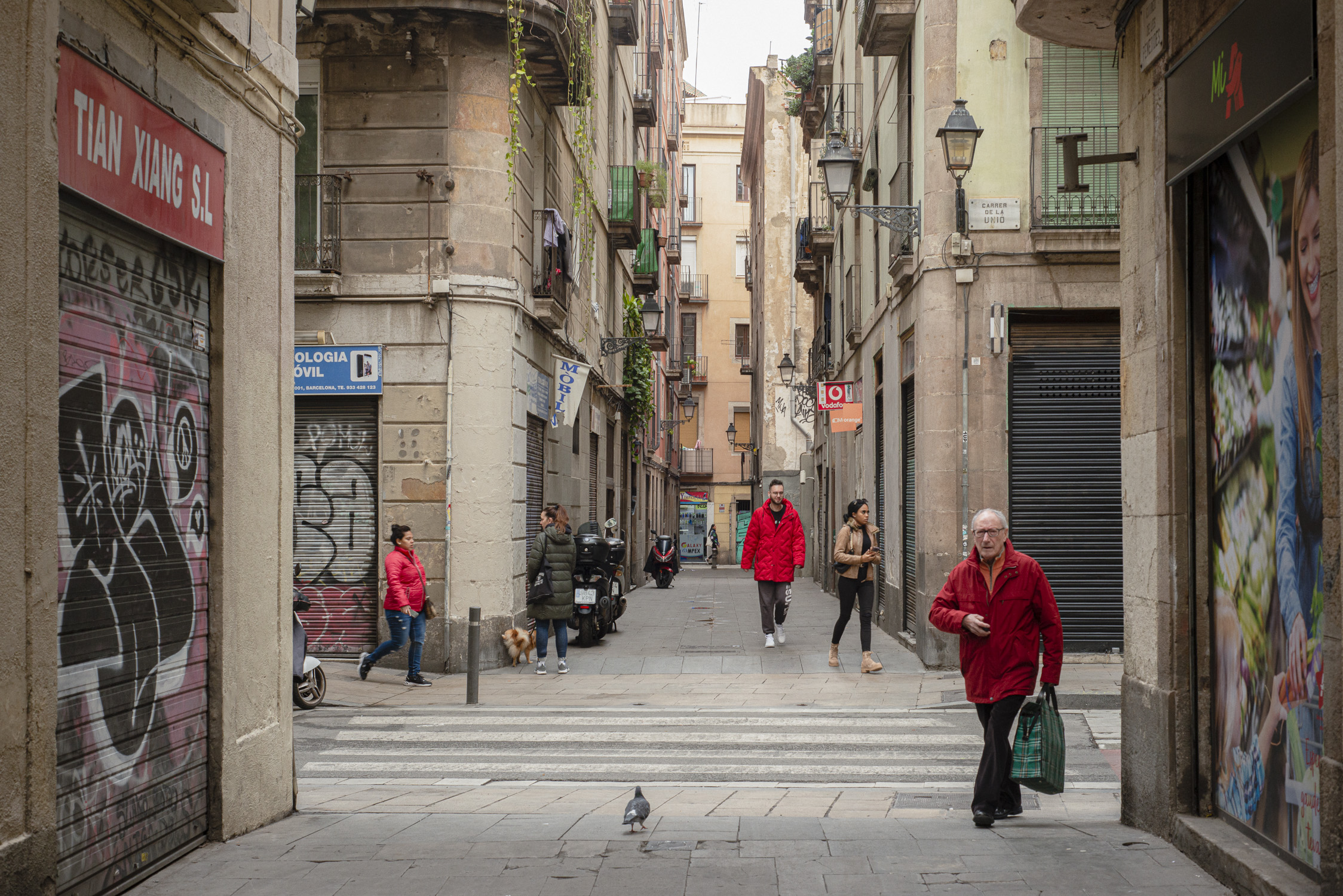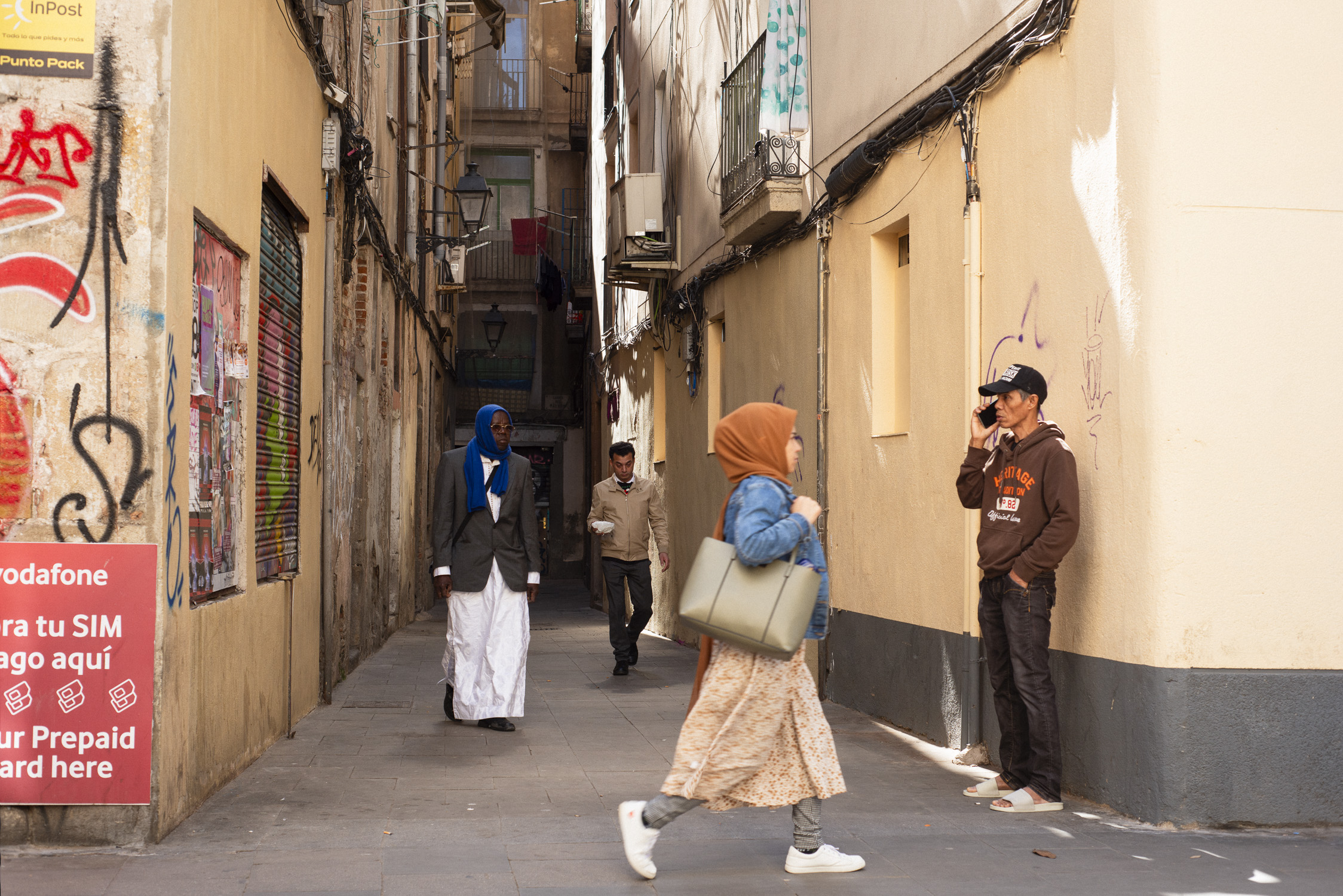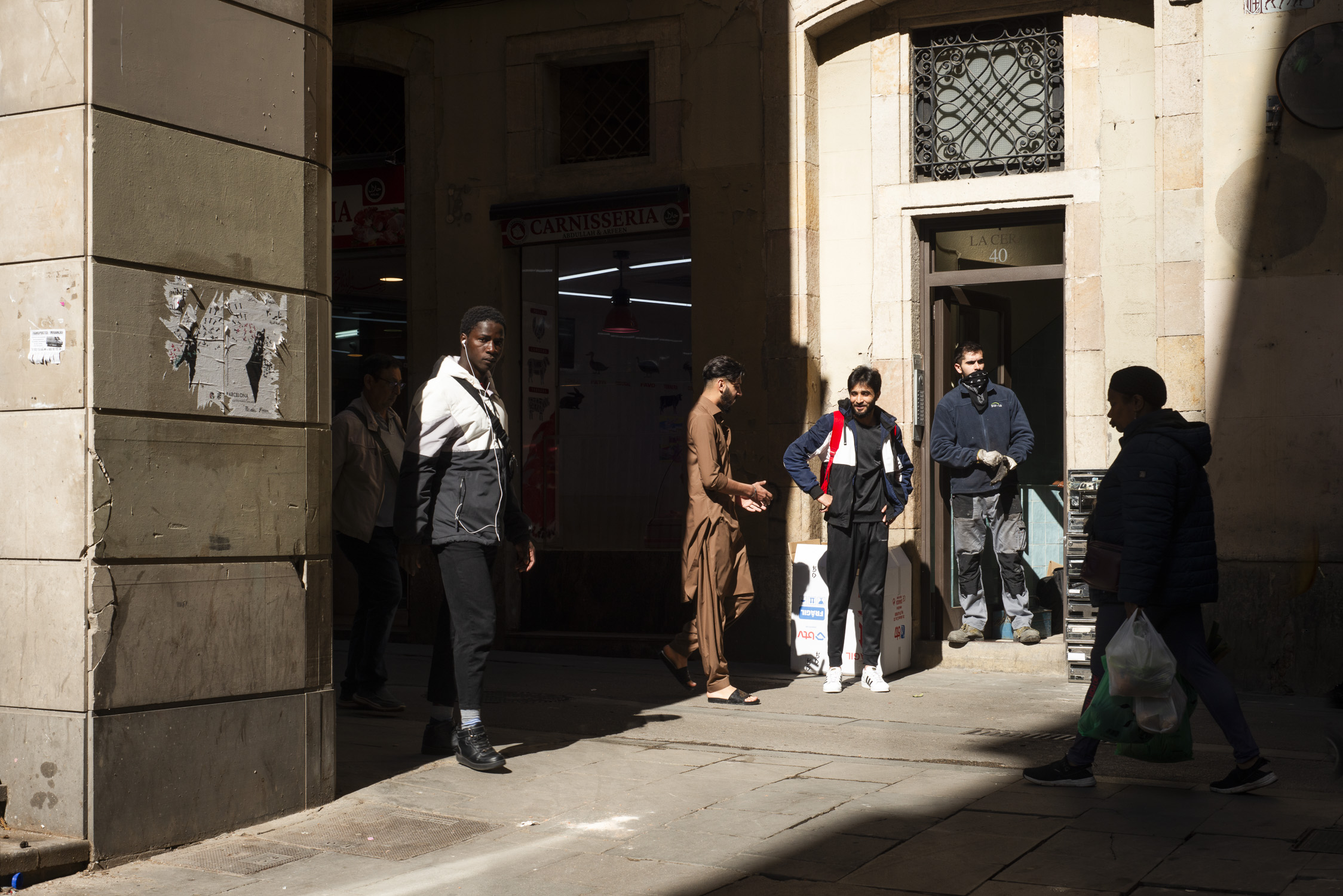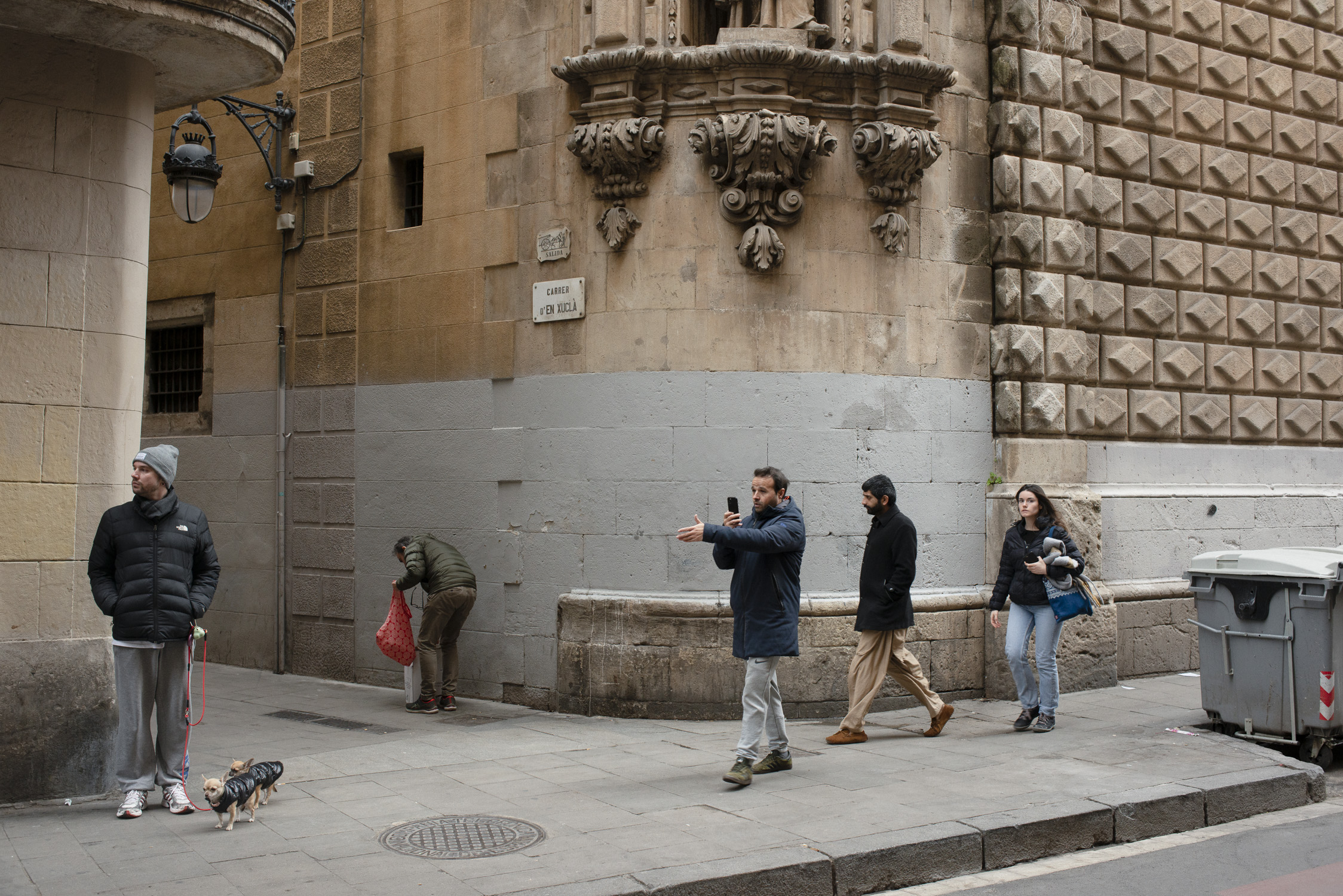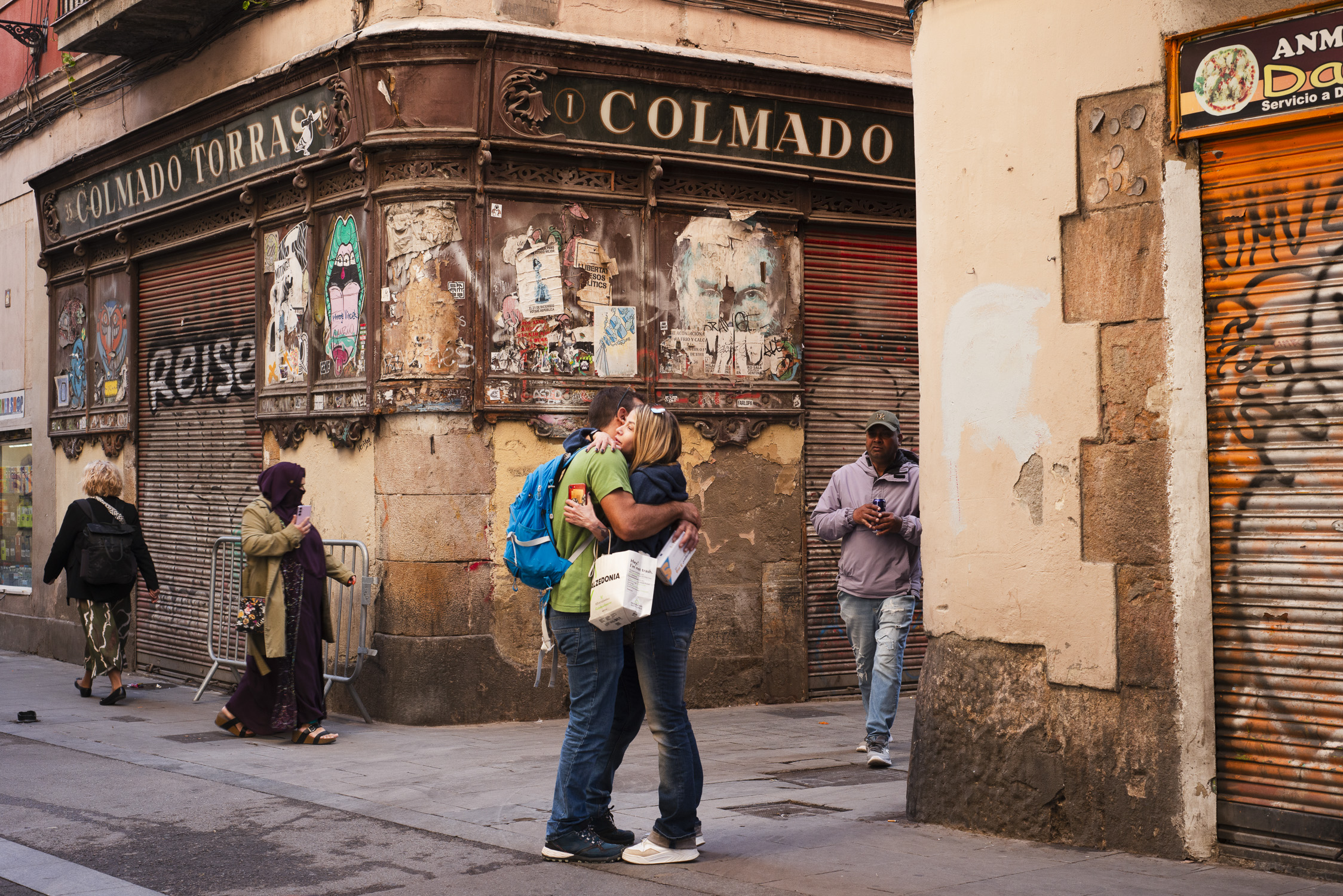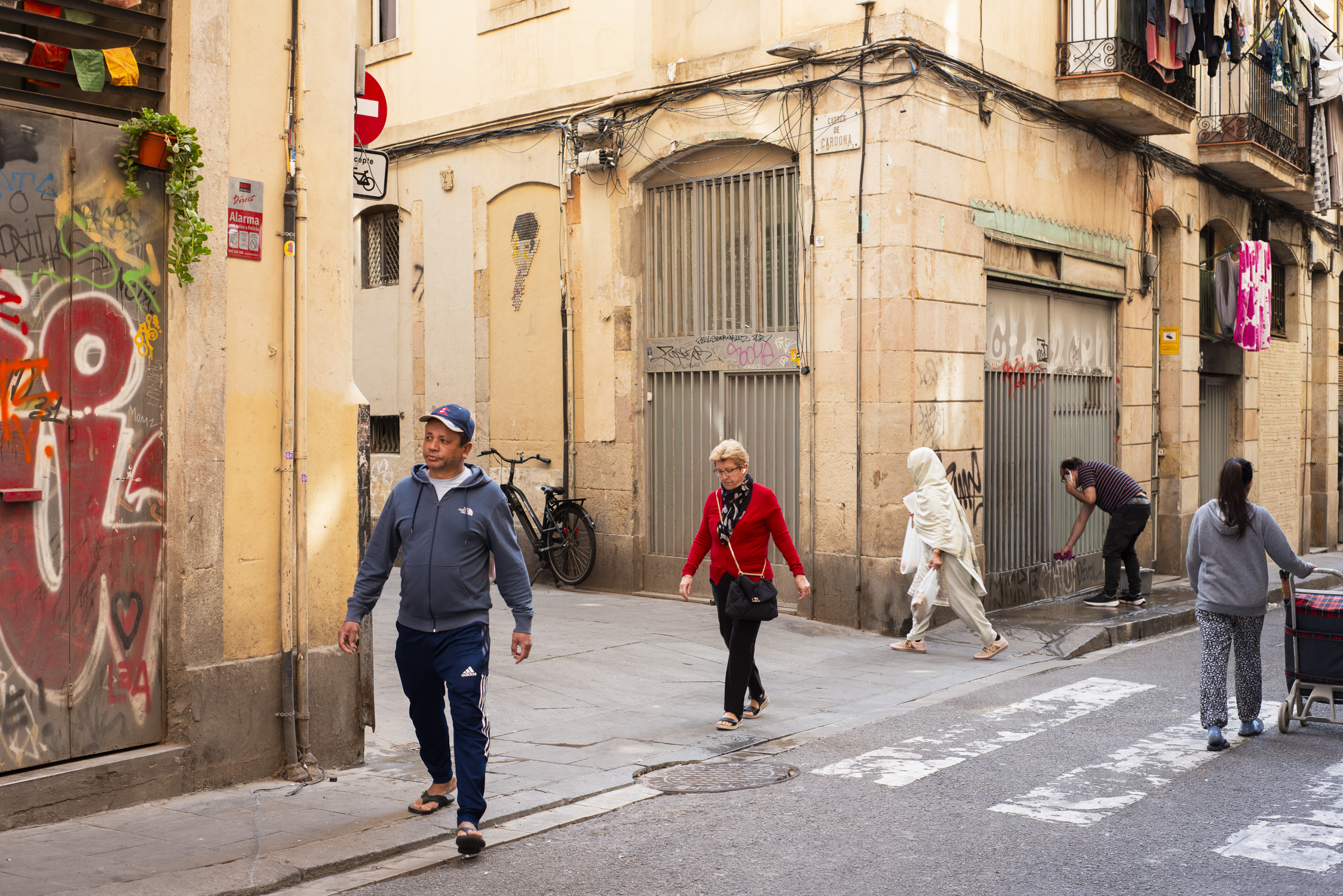Raval, from the classic arabic rábad, means suburb or periphery.
Built during the XIV century, the Raval is not a suburban area anymore, but keeps some of the features typical from the periphery. It is the most ethnically diverse area of Barcelona and one of the most densely populated neighbourhoods. Despite the high pressure from the mass tourism, and the agressive process of gentrification that other areas of the old town are suffering, the Raval seems to resist to loose its own character.
Due to its proximity to the port, historically it has been a place that embrace foreigners and newcommers. Its morphology of narrow streets with not much traffic encourage pedestrians to use the public space.
These images describe more than suggest, from a perspective that emphasise the architecture as well as the local businesses and pedestrians. The camera is close enough to be able to distinguish faces, but far enough to show much of the urban context. Using the rich textures of the buildings as a backdrop, and pointing the lenses on places of intersection, the pedestrians negotiate the space and the buildings make the context.
Using multiple exposures in short intervals, the images show different instants in the same space. This technic allows me to synthesise street scenes with multiple decisive moments, releasing myself from the conventions from the street photography genre.
Raval, from the classic arabic rábad, means suburb or periphery.
Built during the XIV century, the Raval is not a suburban area anymore, but keeps some of the features typical from the periphery. It is the most ethnically diverse area of Barcelona and one of the most densely populated neighbourhoods. Despite the high pressure from the mass tourism, and the agressive process of gentrification that other areas of the old town are suffering, the Raval seems to resist to loose its own character.
Due to its proximity to the port, historically it has been a place that embrace foreigners and newcommers. Its morphology of narrow streets with not much traffic encourage pedestrians to use the public space.
These images describe more than suggest, from a perspective that emphasise the architecture as well as the local businesses and pedestrians. The camera is close enough to be able to distinguish faces, but far enough to show much of the urban context. Using the rich textures of the buildings as a backdrop, and pointing the lenses on places of intersection, the pedestrians negotiate the space and the buildings make the context.
Using multiple exposures in short intervals, the images show different instants in the same space. This technic allows me to synthesise street scenes with multiple decisive moments, releasing myself from the conventions from the street photography genre.
Raval, from the classic arabic rábad, means suburb or periphery.
Built during the XIV century, the Raval is not a suburban area anymore, but keeps some of the features typical from the periphery. It is the most ethnically diverse area of Barcelona and one of the most densely populated neighbourhoods. Despite the high pressure from the mass tourism, and the agressive process of gentrification that other areas of the old town are suffering, the Raval seems to resist to loose its own character.
Due to its proximity to the port, historically it has been a place that embrace foreigners and newcommers. Its morphology of narrow streets with not much traffic encourage pedestrians to use the public space.
These images describe more than suggest, from a perspective that emphasise the architecture as well as the local businesses and pedestrians. The camera is close enough to be able to distinguish faces, but far enough to show much of the urban context. Using the rich textures of the buildings as a backdrop, and pointing the lenses on places of intersection, the pedestrians negotiate the space and the buildings make the context.
Using multiple exposures in short intervals, the images show different instants in the same space. This technic allows me to synthesise street scenes with multiple decisive moments, releasing myself from the conventions from the street photography genre.
Raval, from the classic arabic rábad, means suburb or periphery.
Built during the XIV century, the Raval is not a suburban area anymore, but keeps some of the features typical from the periphery. It is the most ethnically diverse area of Barcelona and one of the most densely populated neighbourhoods. Despite the high pressure from the mass tourism, and the agressive process of gentrification that other areas of the old town are suffering, the Raval seems to resist to loose its own character.
Due to its proximity to the port, historically it has been a place that embrace foreigners and newcommers. Its morphology of narrow streets with not much traffic encourage pedestrians to use the public space.
These images describe more than suggest, from a perspective that emphasise the architecture as well as the local businesses and pedestrians. The camera is close enough to be able to distinguish faces, but far enough to show much of the urban context. Using the rich textures of the buildings as a backdrop, and pointing the lenses on places of intersection, the pedestrians negotiate the space and the buildings make the context.
Using multiple exposures in short intervals, the images show different instants in the same space. This technic allows me to synthesise street scenes with multiple decisive moments, releasing myself from the conventions from the street photography genre.
Raval, from the classic arabic rábad, means suburb or periphery.
Built during the XIV century, the Raval is not a suburban area anymore, but keeps some of the features typical from the periphery. It is the most ethnically diverse area of Barcelona and one of the most densely populated neighbourhoods. Despite the high pressure from the mass tourism, and the agressive process of gentrification that other areas of the old town are suffering, the Raval seems to resist to loose its own character.
Due to its proximity to the port, historically it has been a place that embrace foreigners and newcommers. Its morphology of narrow streets with not much traffic encourage pedestrians to use the public space.
These images describe more than suggest, from a perspective that emphasise the architecture as well as the local businesses and pedestrians. The camera is close enough to be able to distinguish faces, but far enough to show much of the urban context. Using the rich textures of the buildings as a backdrop, and pointing the lenses on places of intersection, the pedestrians negotiate the space and the buildings make the context.
Using multiple exposures in short intervals, the images show different instants in the same space. This technic allows me to synthesise street scenes with multiple decisive moments, releasing myself from the conventions from the street photography genre.
More Projects

PilgrimsBarcelona (In progress since 2019)
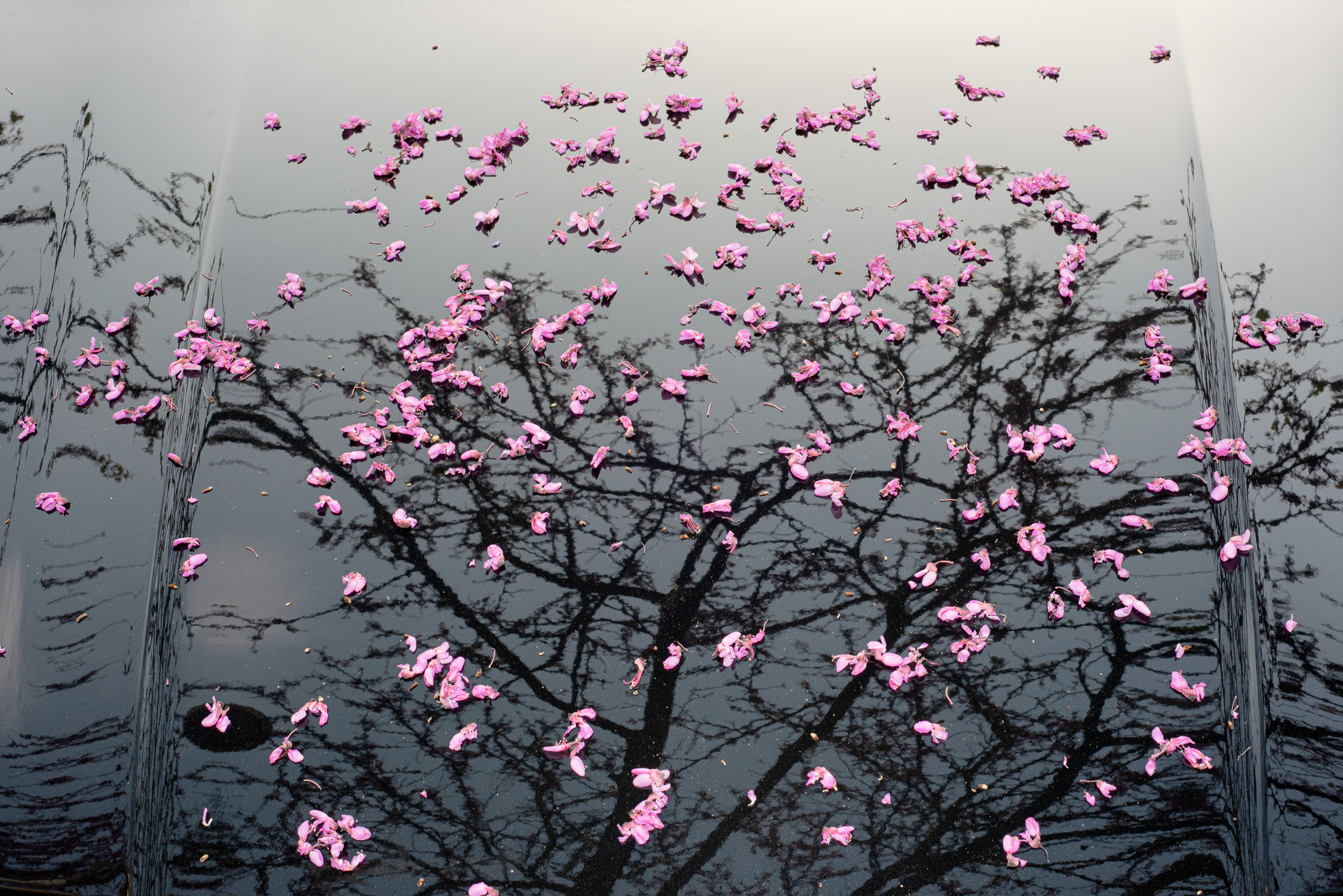
ChasisBarcelona 2021
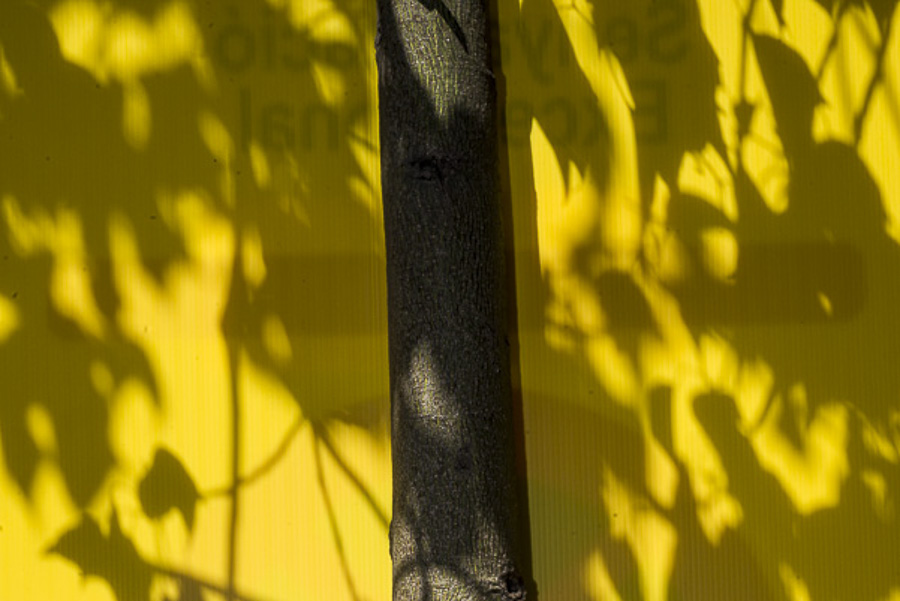
BarcelonaIn between

Barcelona IIIContorsionists

Barcelona IIOngoing street landscapes
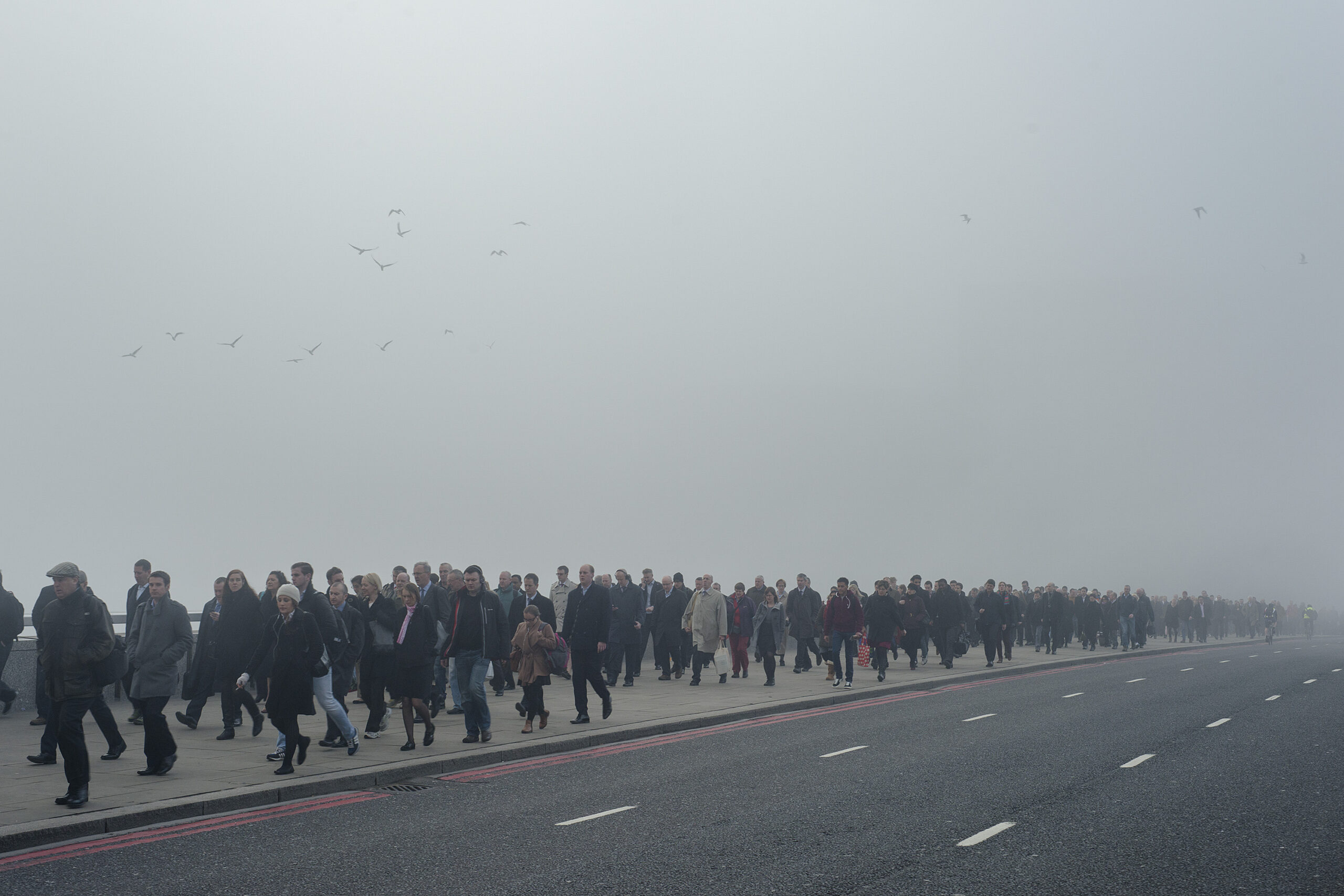
The Ring of SteelLondon 2010-2014
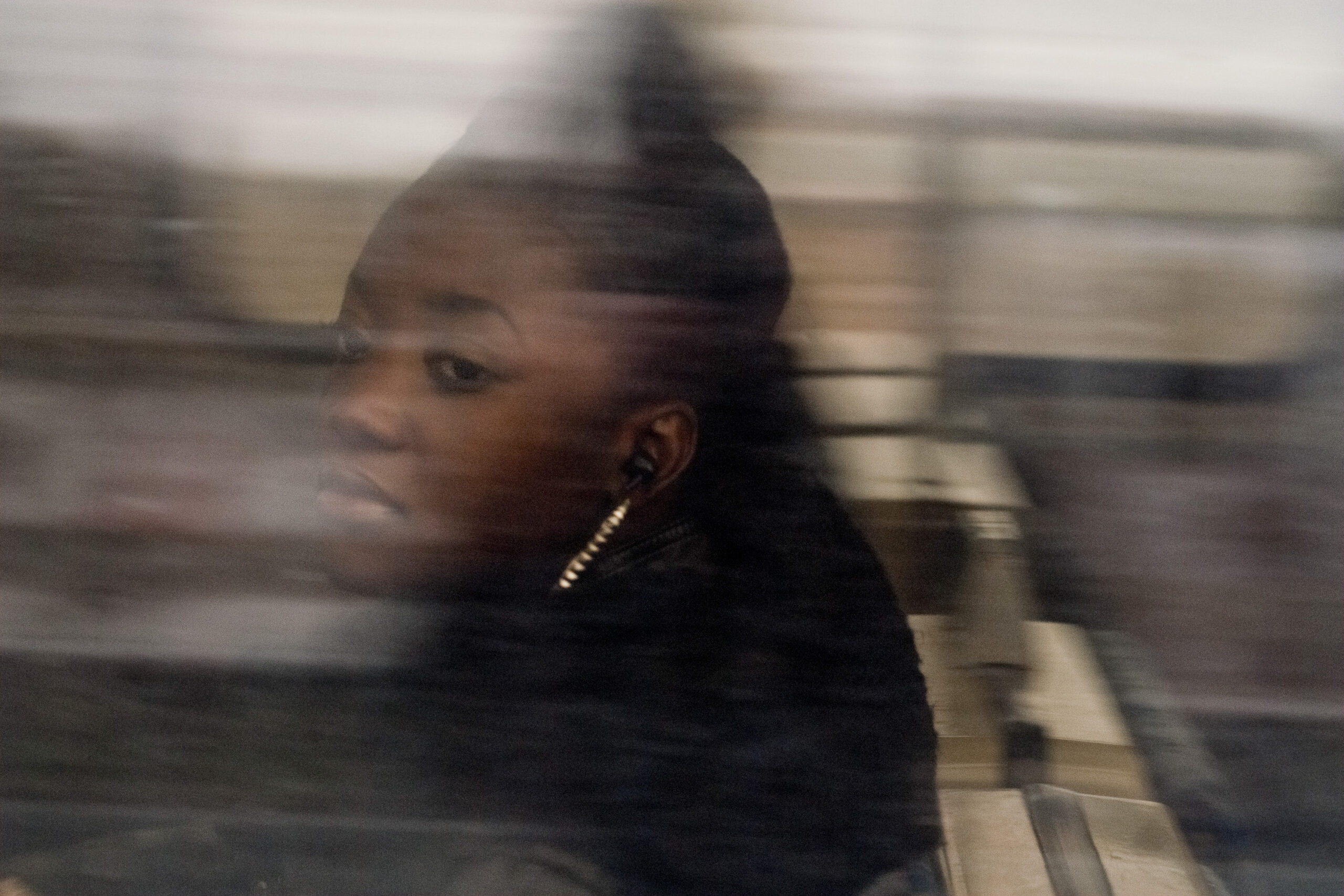
In transitLondon 2013-2014
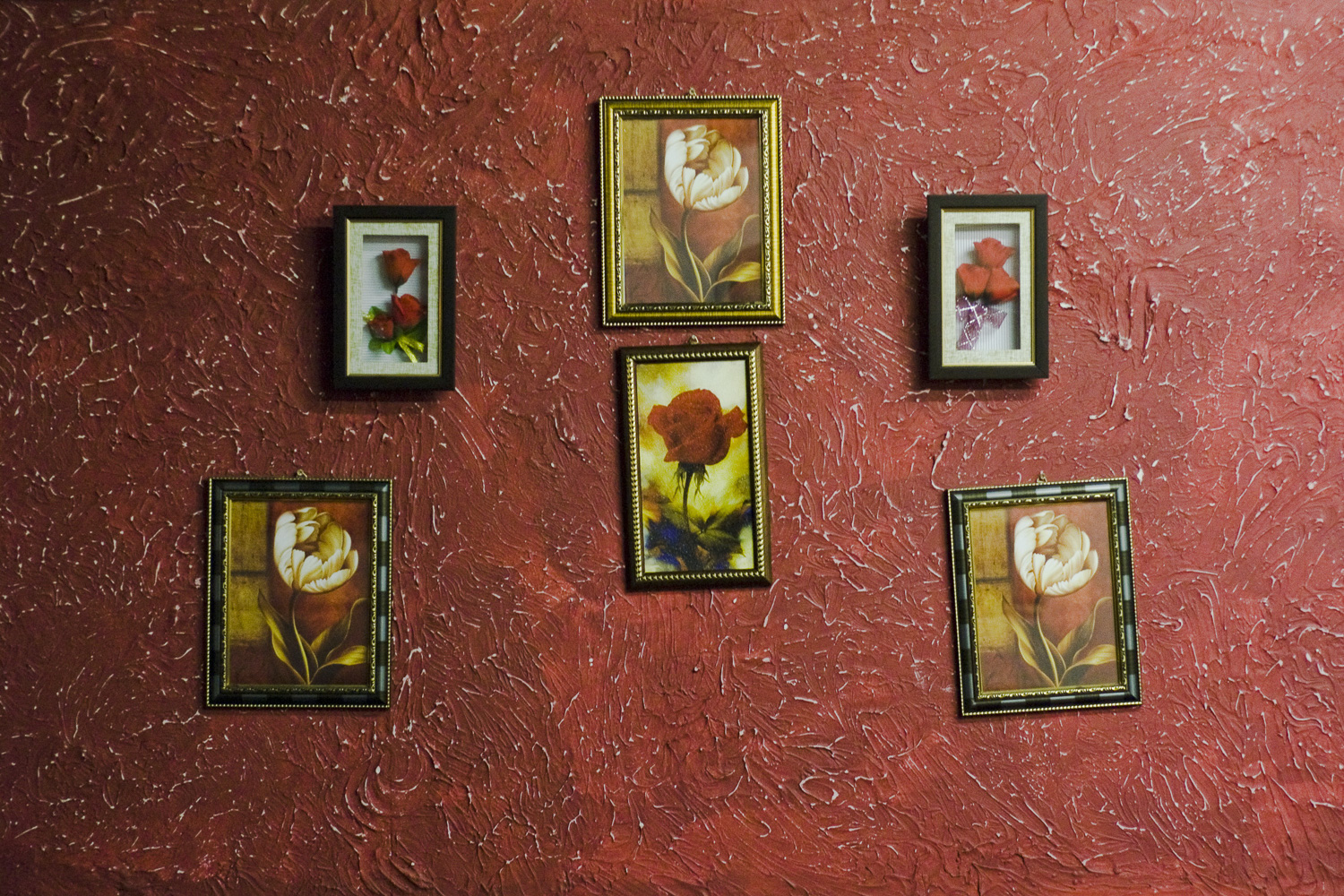
The A10 (Kingsland Road)for the Hackney Council, London

Pre-Olympic Landscapesfor the Hackney Museum, London

Lamb LaneLondon 2009-2010
©2023 OF ALL CONTENTS: ARNAU ORIOL
BARCELONA 2023


